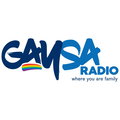
Programme 3 - Timbre
Loading player...
Now that we know a lot more about pitch and duration, we are ready to explore the third element of music – Timbre, also called Tone Colour. Let’s think of timbre as the resonance or quality of tone by which our ears recognize and identify the distinctive sound of a particular singing voice or musical instrument. In addition to its role in distinguishing between different instruments, timbre is used to convey emotion, mood, or style in music. Come and explore these concepts in our third episode of “about Music”.
Music links and Questions for Programme 3: about Music: Timbre; and answers to the questions from Programme 2. Any questions or comments, you are welcome to write to me at: brian@gsaradio.stream
Answers to questions from Programme 2:
1. Please Google Beethoven Symphony number 5 rhythm and follow the Encyclopedia Britannica link and read up about how that rhythmic motive appears all over the symphony.
I trust you found this fascinating. It’s a topic we will come back to repeatedly with music of the late 1800’s.
2. There is an interesting way of looking at rhythm as a clock face in the following video https://music.youtube.com/watch?v=2UphAzryVpY&feature=share
3. Can you think of a reason for the prominence of a drum set and drummer in almost all popular music? (Hint: Think about why the drum set consists of different sizes of drums.)
The reason is that rhythm is often the most vital part of popular music and the drum kit is a very simple way of keeping the beat at the forefront. It, so to speak, is the glue that holds the performance together. And what about the different sizes of the drums? In programme one I mentioned that the different sizes produce different low and high pitched sounds, so by having different sizes of drums, the drummer is able to give much more than just a rhythm. The rhythm has a melodic aspect to it that help us to identify the stronger and weaker pulses of the different 2, 3, or 4 beat patterns, which is especially vital for dance music.
4. Then can you explain how it is that classical music does not rely heavily on the presence of drums in the orchestra?
The orchestra uses the bass instruments to supply the rhythm for the piece, sometimes in combination with the large copper kettle drums.
5. What function does that alternating bass serve?
We spoke of this last week and heard in several pieces how the orchestra (or piano) uses alternating low and higher bass notes to keep the music and the beat flowing. These serve the same function as the large and small drums in the drum kit, namely to help us identify the strong and weaker pulses in the rhythm and identify if the music is in two beats, three beats, or four.
6. The very large kettle drums often seen in the orchestra are called the tympani. But they have special uses besides keeping the beat. Read up about them and how they support that alternating bass we have been talking about.
The tympani are those large copper coloured drums you see in the orchestra, and there are often three of them of different sizes. These drums are tuned to specific notes, as you may recall hearing as the very first note in O Fortuna. They are powerful and dramatic. They often produce the notes for that alternating bass pattern. One very interesting feature is that these drums can be tuned to different notes, and if you watch carefully during an orchestral performance, you may spot the timpanist with his ear practically touching the head of the drum as he tunes it to the notes required for the next section of the music.
Music links and Questions for Programme 3: about Music: Timbre; and answers to the questions from Programme 2. Any questions or comments, you are welcome to write to me at: brian@gsaradio.stream
Answers to questions from Programme 2:
1. Please Google Beethoven Symphony number 5 rhythm and follow the Encyclopedia Britannica link and read up about how that rhythmic motive appears all over the symphony.
I trust you found this fascinating. It’s a topic we will come back to repeatedly with music of the late 1800’s.
2. There is an interesting way of looking at rhythm as a clock face in the following video https://music.youtube.com/watch?v=2UphAzryVpY&feature=share
3. Can you think of a reason for the prominence of a drum set and drummer in almost all popular music? (Hint: Think about why the drum set consists of different sizes of drums.)
The reason is that rhythm is often the most vital part of popular music and the drum kit is a very simple way of keeping the beat at the forefront. It, so to speak, is the glue that holds the performance together. And what about the different sizes of the drums? In programme one I mentioned that the different sizes produce different low and high pitched sounds, so by having different sizes of drums, the drummer is able to give much more than just a rhythm. The rhythm has a melodic aspect to it that help us to identify the stronger and weaker pulses of the different 2, 3, or 4 beat patterns, which is especially vital for dance music.
4. Then can you explain how it is that classical music does not rely heavily on the presence of drums in the orchestra?
The orchestra uses the bass instruments to supply the rhythm for the piece, sometimes in combination with the large copper kettle drums.
5. What function does that alternating bass serve?
We spoke of this last week and heard in several pieces how the orchestra (or piano) uses alternating low and higher bass notes to keep the music and the beat flowing. These serve the same function as the large and small drums in the drum kit, namely to help us identify the strong and weaker pulses in the rhythm and identify if the music is in two beats, three beats, or four.
6. The very large kettle drums often seen in the orchestra are called the tympani. But they have special uses besides keeping the beat. Read up about them and how they support that alternating bass we have been talking about.
The tympani are those large copper coloured drums you see in the orchestra, and there are often three of them of different sizes. These drums are tuned to specific notes, as you may recall hearing as the very first note in O Fortuna. They are powerful and dramatic. They often produce the notes for that alternating bass pattern. One very interesting feature is that these drums can be tuned to different notes, and if you watch carefully during an orchestral performance, you may spot the timpanist with his ear practically touching the head of the drum as he tunes it to the notes required for the next section of the music.

